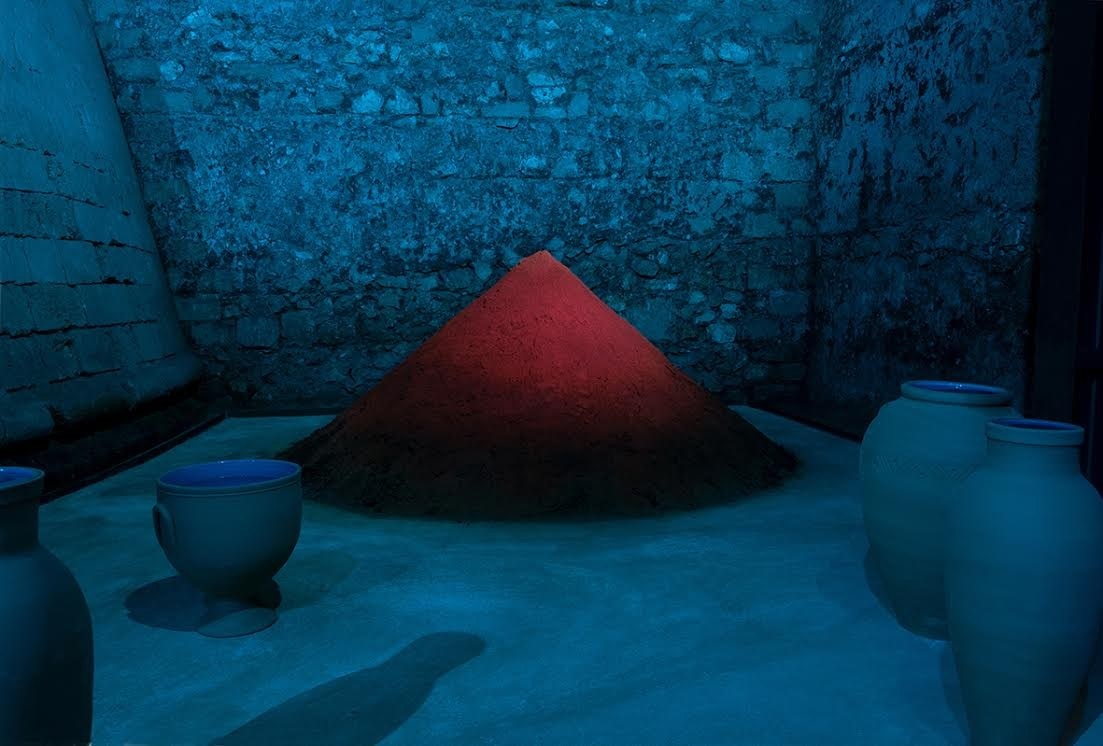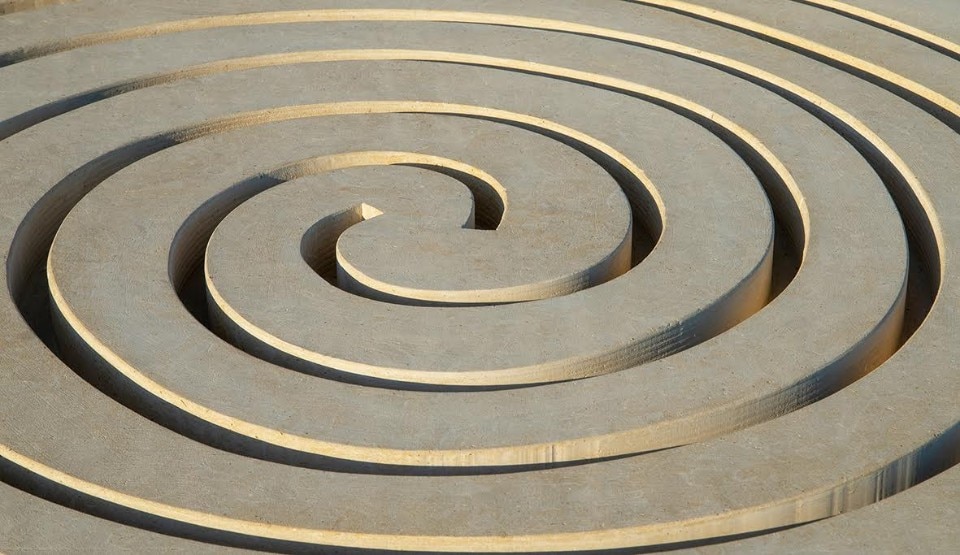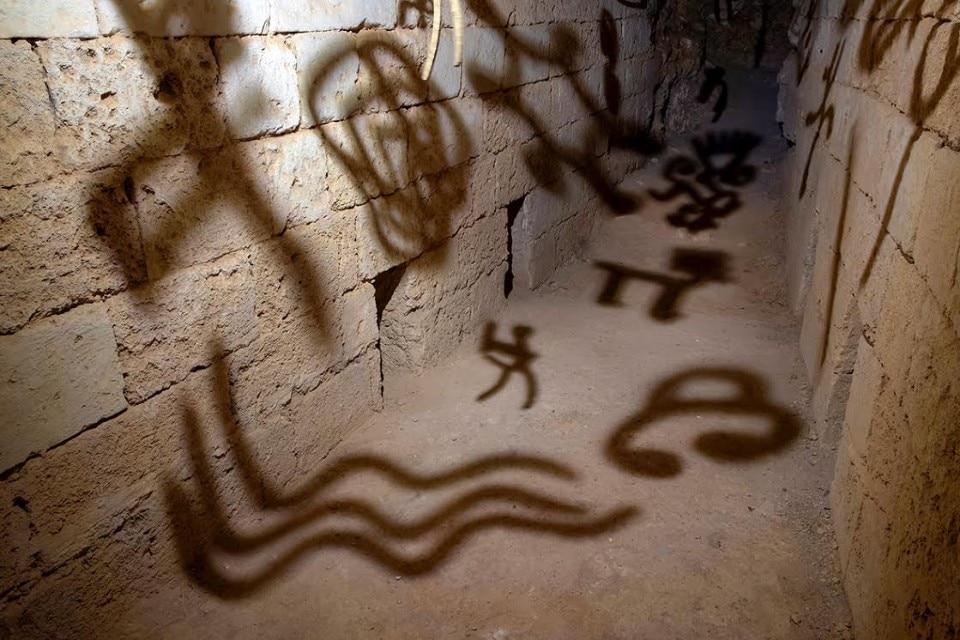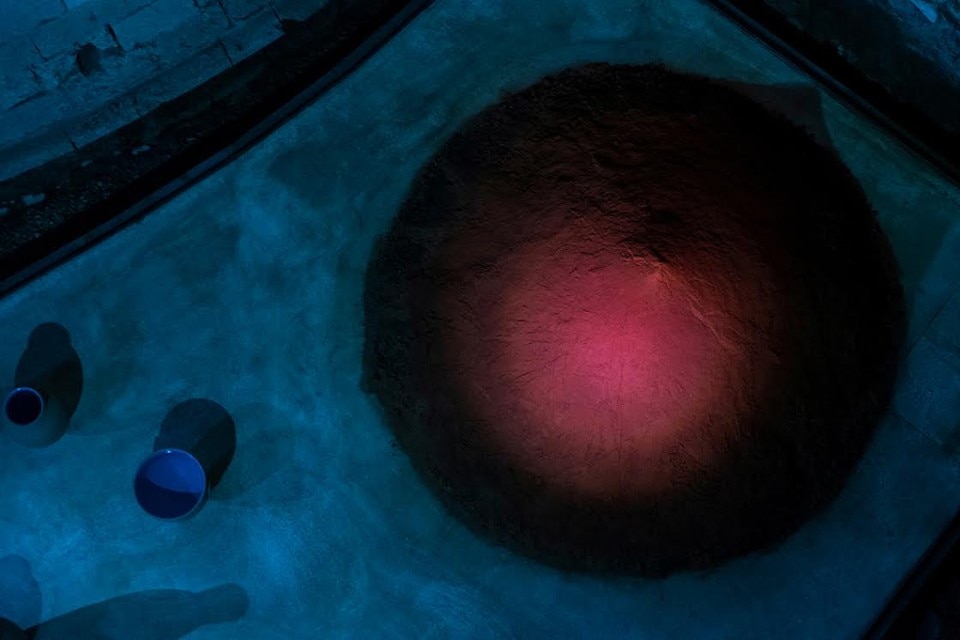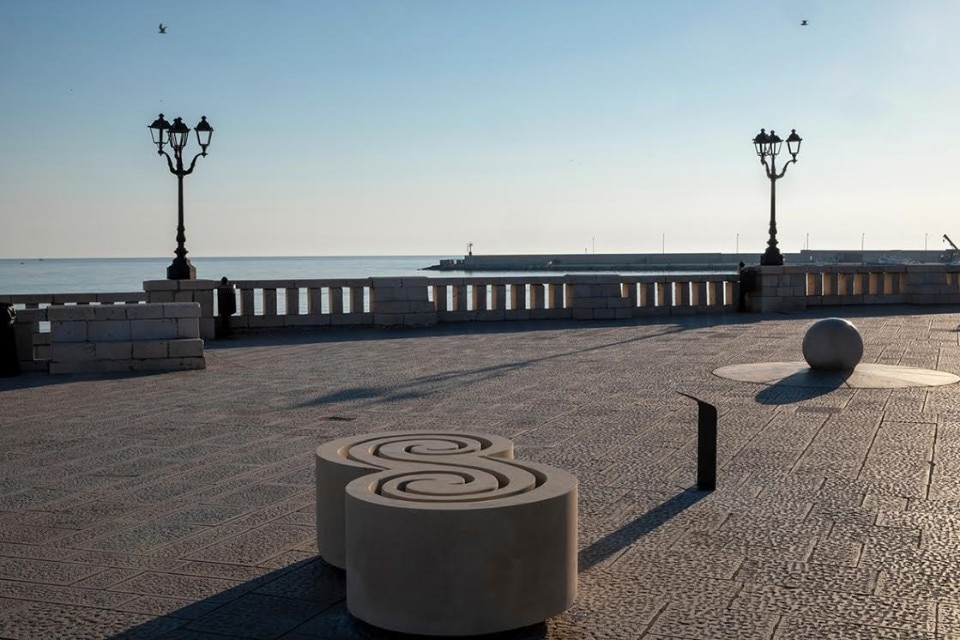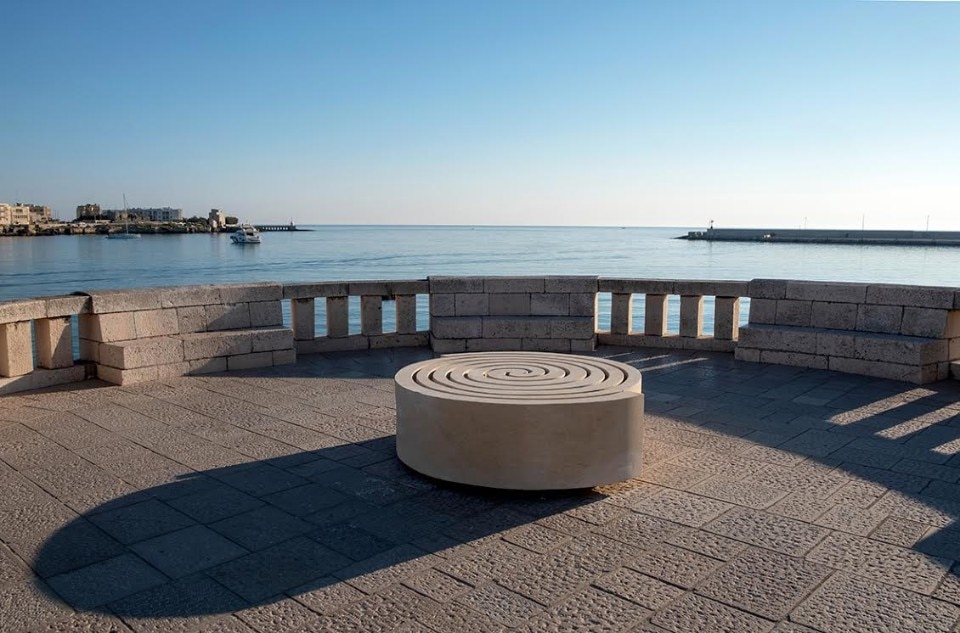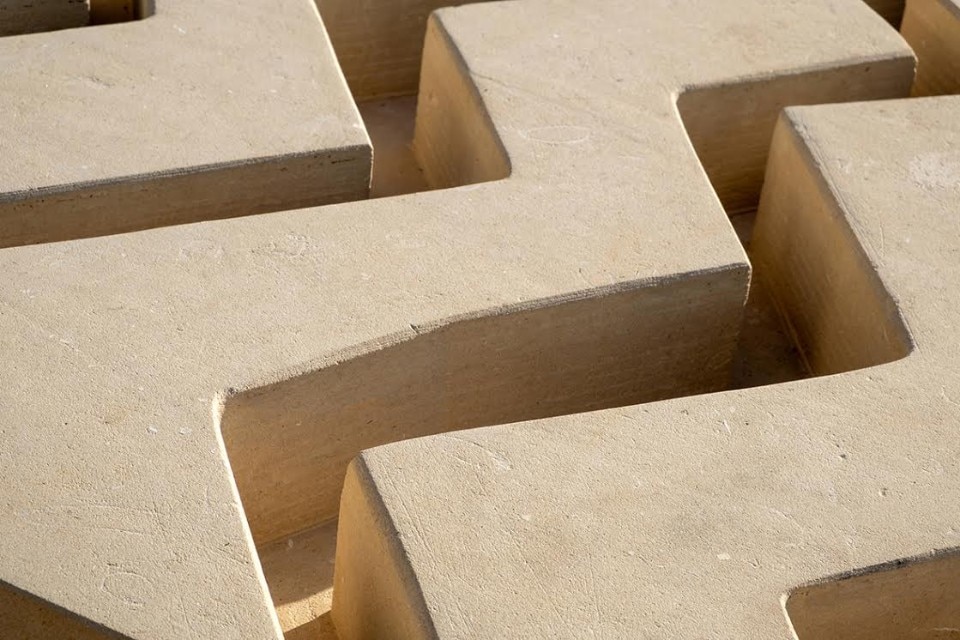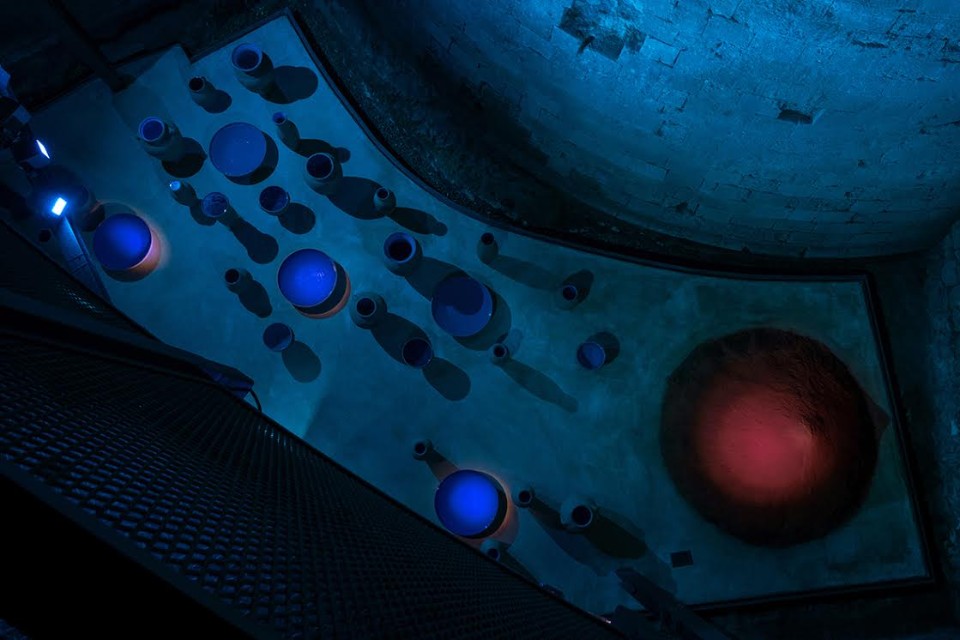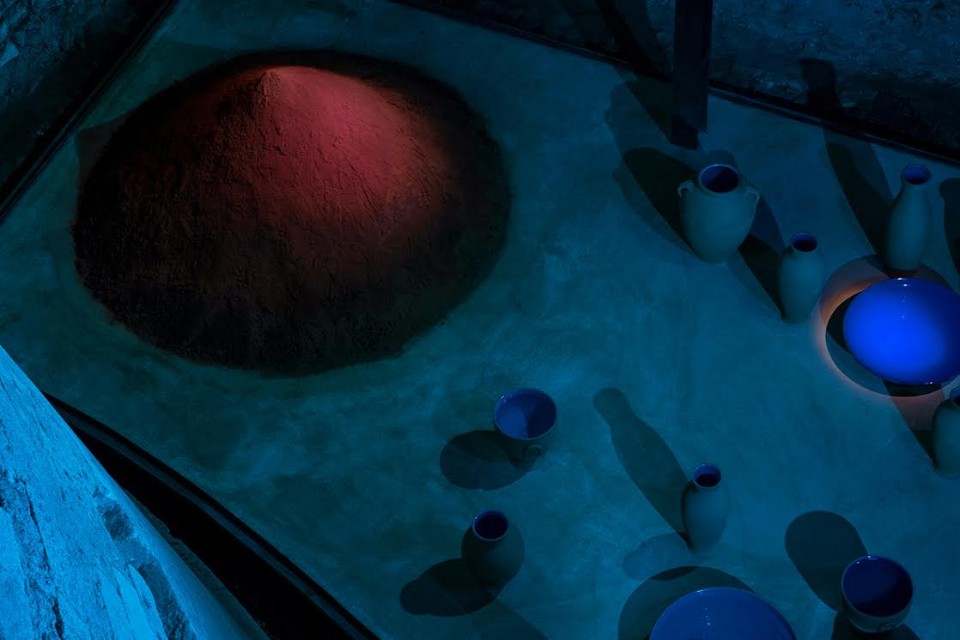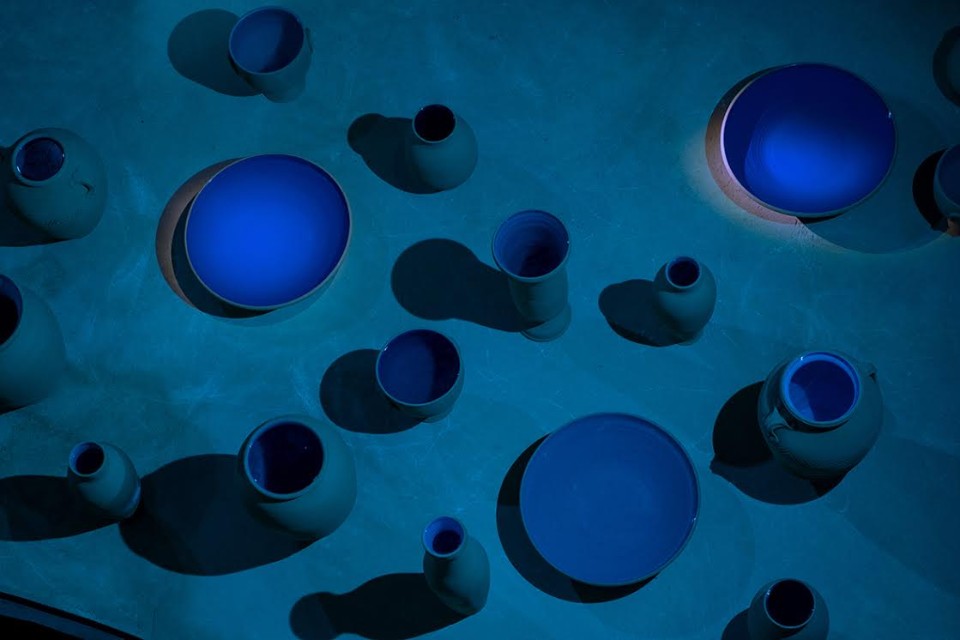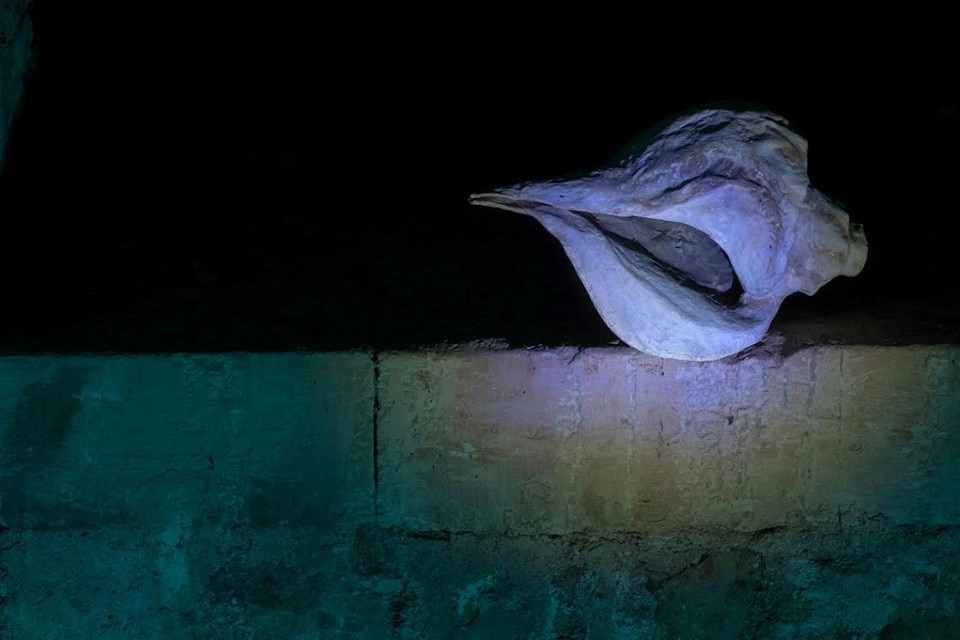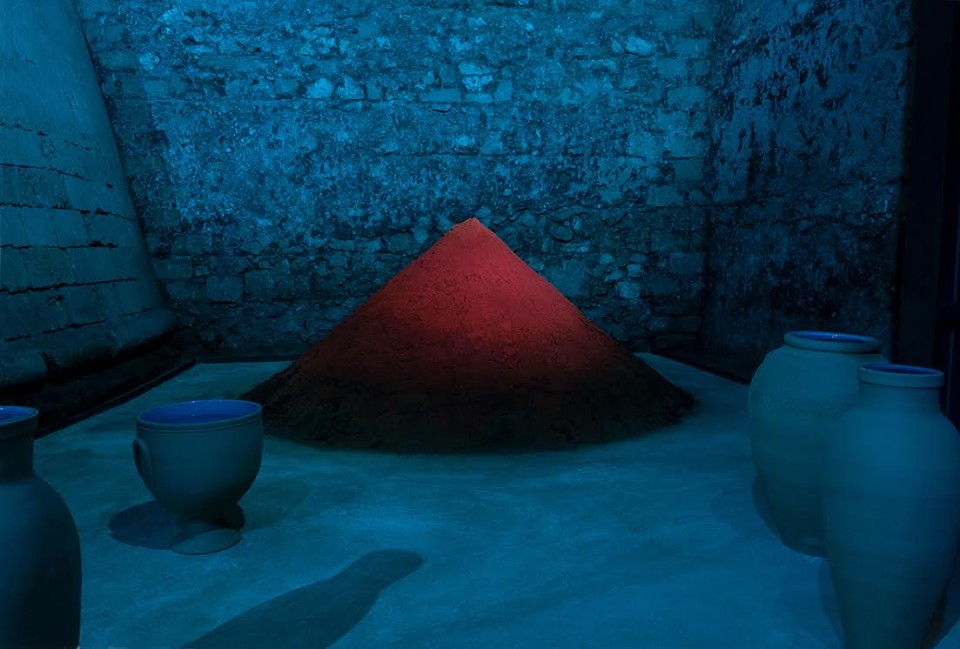The exhibition curated by Cijauru for the Torre Matta of the Aragonese Castle and the urban spaces of the city of Otranto, Italy, was born from the urgency to bring out maps and complex compasses capable of highlighting knowledge, experiences and ways of living remained in the shadows until now. The town in Salento represents, in the intentions of the curator Francesco Scasciamacchia and the art historian Davide De Notarpietro, a crossroads of stories, people, a complexity of relationships with the rest of the world. Since the title “Make this earth home”, the exhibition reveals her desire to research, to share paths and suggestions.
The project is a result of Maria D. Rapicavoli’s residence in Salento. The Sicilian artist who lives and works in New York is not new to anthropological diving, and this project finds its origin in the Grotta dei Cervi in Porto Badisco, a fascinating treasure chest of signs and myths that resonate with our contemporaneity and with the cultural crossbreeding that has always characterized this part of Italy. Here, in this natural coastal cave situated along the Salento coast, the artist has captured an ancient mural that reproduces the image of a shaman, which becomes the heart of her intervention in a feminist sense. Analyzing the figure, Rapicavoli has isolated a detail that seems to reproduce a female genital organ that would testify how the painting represents not the dancing God but the image of the Great Mother Earth to which Neolithic people dedicated dancing rituals.
This is how knowledge and imagination are activated to give shape to a representation, to an authentically artistic action. This detail isolated from the rest of the pictogram composes, together with other motifs taken from the Grotta dei Cervi, a mysterious and dense mobile sequence of signs that introduce the visitor to the discovery of the Matta Tower of the Aragonese Castle of Otranto, a fortified architecture recently recovered as a cultural container. The artist’s intervention dialogues with the architectural structure on several levels, from space to acoustic and light. In her work, Rapicavoli abstracts the uniqueness of an object, a story or a material through new meanings and symbols that become aesthetic strategies for broader geopolitical and social narratives.
The artist’s attention and care for the place reveal a net of relationships that, in the words of English anthropologist Tim Ingold, generates a dwelling perspective. The artist does not aim so much to document but rather to refine a transformative potential that lies in the encounter between knowledge and imagination. Here art educates the eye to other multiple narratives of living in the world. The richness of traditions and craft skills related to the cultural density of the Terra d’Otranto, a stratification of techniques and knowledge rooted in time, come into play. So the artist has started a collaboration with local artisans, in particular with the master papier-mâché maker Mario Di Donfrancesco from Lecce and the Fratelli Colì, master ceramists from Cutrofiano. Thus was born the most powerful work of the entire exhibition, a composition of terracotta vases of different sizes that occupies the lower part of the tower.
The installation I due mari refers to material culture from the archaic period to the Hellenistic and late-antique period of Salento, reproducing various terracottas that, different in shape and size, evoke both the styles of each historical period and the different functions that the pottery has had over time: domestic use, ceremonial offering in devotion to the Great Mother Earth, propitiatory to the underground and marine gods, as transport for food (oil, wine, wheat and cereals), as a precious good of trade that identifies the social hierarchy, as an instrument of irradiation of Greek culture. Thus the vases, a widespread and global cultural archetype, become abstract symbols of the cultural stratifications of Salento’s past still witnessed in the present.
The artist distorts today’s common sense of national identities and territorial boundaries. Like a choral composition, made up of unique but collectively arranged elements, the installation takes us into a past made up of overlapping races, as witnessed by the Messapi, proto-inhabitants of Salento mixed with Illyrians, Epirians, Hellens, Phoenicians, Cretans and all the people who crossed the Otranto Canal. The individually illuminated vases give back the colors of the sea of Otranto in its many variations, from blue to green, a scenic effect created through the different shades of the enamels inside each vase, then filled with sea water. The sea becomes an absolute metaphor for commercial and cultural exchanges with the banks of the East as represented by the large red neon lights on the outside of the Castel, Make This Earth Home.
- Exhibition title:
- Make This Earth Home
- Artist:
- Maria D. Rapicavoli
- Curated by:
- Cijauru (Francesco Scasciamacchia, Davide De Notarpietro)
- Where:
- Torre Matta del Castello Aragonese, Otranto (Puglia, Italy)
- Address:
- via Immacolata 26, Otranto, Italy
- Opening dates:
- until 1 November 2020


